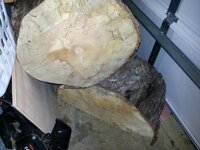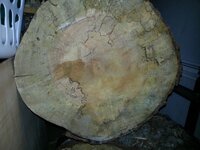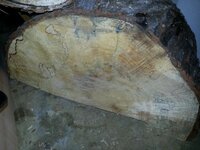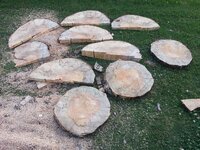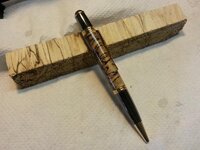Hi Loren...!
Well, there is always more than one way to skin a cat and I'm sorry if my suggestions were a little confusing to you however, the most important details that I was trying you to avoid doing, is to make the big masked to take a round log to the bandsaw to cut slices out, without a proper jig, that my friend, you have 99% probabilities to mangle the bandsaw blade beyond salvageable, will bend or break something in the bandsaw and if you're lucky, you get a good smack in your hands/arms without cutting anything off...!


By cutting the log through its centre (longways) on the bandsaw, if enough clearence ("not" dangerous that way) you get 2 flat surfaces that, reduces the clearance you need on the bandsaw by half and then you can work all your slices from there, with a flat surface always on the bandsaw table.
I don't know how much experience you have on the bandsaw and my suggestions are based on my experience, looking for safety the best way possible as bandsaws can be quite dangerous...!
Unfortunately, the vast majority of heavily spalted woods are very soft, there is their advanced stage of decomposition/rot that encourages the growth of the fungi that develops the spalting as its known so, stabilising becomes crucial for its workability however, with the Cactus Juice system so readily available in our days from our friend Curtis, you should have much trouble in setting yourself for stabilising the beautiful wood you got there...! Maybe an extra expense but, for the price of the wood, it all works out OK...!
Good luck,
Cheers
George
